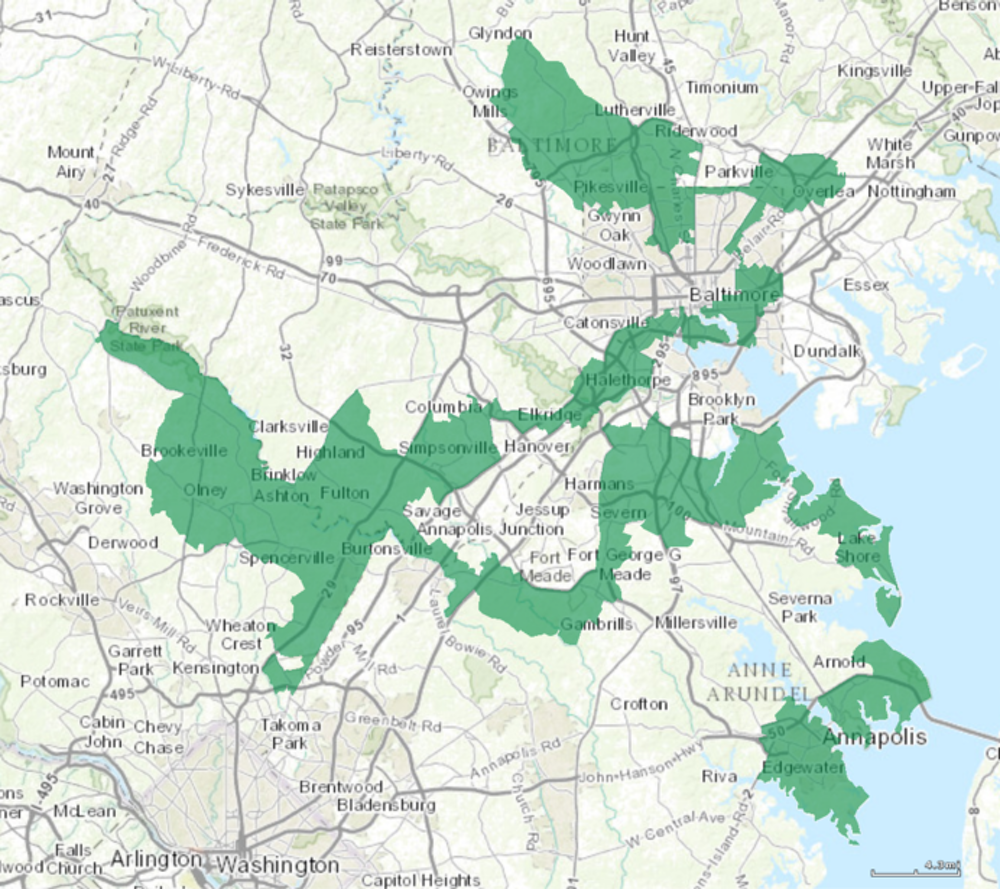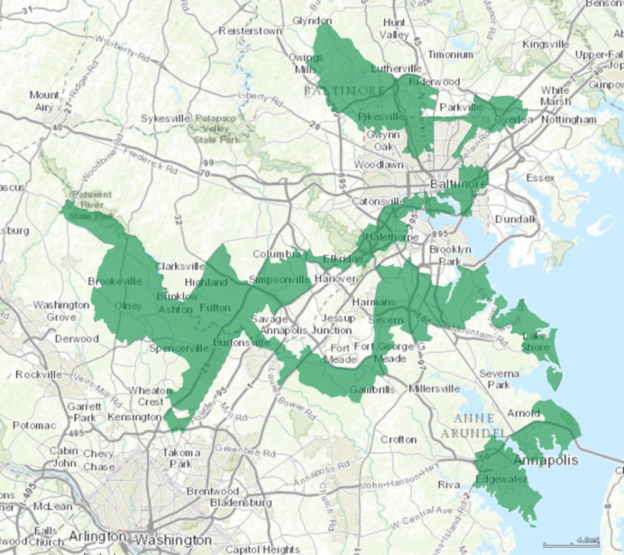Opinion polls over the years have indicated that Americans pretty much loathe Congress but almost always like their Congressman. My Congressman is John Sarbanes (Democrat, 3rd District, Maryland). Sarbanes has an impressive educational background. After graduating from an elite Baltimore prep school, he received his undergraduate degree from Princeton and his law degree from Harvard.
His educational pedigree is, however, no match for his political pedigree. He is the eldest son of Paul Sarbanes who was a United States Senator from Maryland for 30 years (1977–2007). The Senator’s most notable legislative accomplishment was the Sarbanes – Oxley Act of 2002 which reformed corporate accounting rules after the Enron, Tyco, WorldCom and similar scandals. These scandals resulted in investors losing billions of dollars when the stock prices of companies collapsed in spite of having received “clean bills of health” from public accounting firms.
Representative Sarbanes is the lead sponsor of House Bill 1 (For The People Act) now pending in Congress. Recently, it passed the House of Representatives on an almost straight party line vote of 220-210 but has been scuttled in the Senate by Republican opposition. Depending on your point of view, House Bill 1 is either a Democratic power grab seeking to overrule state voting laws or a necessary antidote to Republicans denying people the right to vote. However, the provision which most interests me is the proposal to set up non-partisan gerrymandering committees in each state.
House Bill 1 provides that there will be independent commissions in each state to design congressional districts. The commissions will consist of five Democrats, five Republicans and five Independents and the majority vote will prevail but only if at least one Democrat, one Republican and one Independent is in that majority. So, if the Democrats or the Republicans refused to vote with the majority, the vote would not be effective. I think that the majority vote should be just that and that one party or the other should not have a veto power.
Indeed, I think House Bill 1 is a repeat of the fundamental problem with our current redistricting process where incumbent politicians select their voters rather than the other way around. Currently 90% of the seats in the House of Representatives are “safe” for incumbents. This certainly contributes to the partisan nonsense that we now witness in Congress.
The term “gerrymandering” is derived from Elbridge Gerry who approved a redistricting plan for a state senate district in Massachusetts which, critics said, resembled a salamander, a mythological dragon like monster. Hence, the word: “Gerry Mander.”
Gerrymandering is fairly easy to understand but it has been brought to new levels by the equivalent of google political maps. Basically, partisans will slice and dice voting precincts so that a Congressional district is loaded up with one party or another. The idea is that Bozo the Clown can be elected if he is of the correct party. And, the thing is that it works. Twenty years ago, Maryland had 4 Republicans and 4 Democrats in the House of Representatives. It now has seven Democratic Congressmen and one Republican.
Maryland is a blue state with Democratic registration being approximately 1.5 million voters, Republican voters amounting to 850,000 and Independents being almost 400,000. A non-partisan drawing of maps would give four Congressional districts to the Democrats, two to the Republicans and two would be tossups.
Recent polls indicate that 65% of all voters ‒ Democrats, Republicans and Independents ‒ remain opposed to partisan gerrymandering. The only real opposition comes from partisans and incumbent members of the House of Representatives who are more concerned with keeping their jobs than agreeing to fair maps which keep neighborhoods and communities of interest together.
The recent Supreme Court decision, Rucho v. Common Cause (North Carolina Republican gerrymandering) and the companion case of Lamone v. Benisek (Maryland Democratic gerrymandering) held the federal courts were not the proper forums in partisan gerrymandering cases since such gerrymandering was a “political question” which could not be resolved by the Judiciary.
According to the New Republic, “America’s Most Gerrymandered District” is ‒ good gosh, the one I’m sitting in ‒ that of Congressman John (For The People) Sarbanes’ Maryland District 3. An official Maryland website indicates that District 3 “wanders” through Montgomery, Howard, Anne Arundel and Baltimore County and also Baltimore City. I suppose that the “wandering” is one way to describe it. The better way is to look at it.

Anyone with a rudimentary knowledge of Maryland geography will immediately see that this district makes no sense. At more than one point the various disparate parts are joined together by a single block. The tony liberal precincts of Montgomery County have absolutely nothing to do with Baltimore City hardscrabble precincts except, of course, they both vote Democratic.
Congressman Sarbanes has received in excess of 69% of the vote in the last two congressional elections. He has an absolutely “safe” district as do many Republicans in Texas or Ohio. This is the real problem with “gerrymandering.” A Democrat or Republican with a “safe” district has absolutely no incentive to “come to the middle.” He or she can remain comfortably on the left or on the right and be reelected.
I spent over 40 years working in the Maryland General Assembly. In just four of those years, right after the decennial census, you would see Maryland’s 8 congressmen / women ‒ being ferried by their drivers from their offices in Washington to Annapolis ‒ in order to “help out” with the new Congressional maps. Indeed, Congressman Sarbanes was intimately involved in creating current District 3. I think it is fair to say current District 3 helped Congressman Sarbanes a great deal but the “people” very little.
So is there a cure? It occurs to me that the solution is fairly simple.
First, create an Independent Redistricting Commission composed of 15 voters who are “registered” Independent. Republicans or Democrats need not apply.
Second, the maps drawn by the Independent Redistricting Commission may not be overruled unless the state legislature musters 75% of its members for a substitute.
Third, the Independent Redistricting Commission shall do its best to create compact districts that do not “wander” around the state and which are consistent with constitutional and statutory requirements.
Finally, incumbent congresspersons will be invited to testify before the Commission but they shall be the last witnesses, not the first as they are now.
So will any of this make a difference? Just imagine if 50 congressional seats were no longer “safe” but tossups so that candidates had to appeal to both Democrats and Republicans. Congress is now almost evenly split between Republicans and Democrats but the current Republicans and Democrats are in “safe” seats so they have no incentive to compromise but only to toe the company line. If 50 seats are no longer strictly partisan but held by people who appealed to both Democrats and Republicans, it would completely change the current dynamic and make all the difference. Dedicated partisans will not like this change but 99% of the “people” would.
So, do I hate Congress but like my Congressman? Hate is an awfully strong word. Let’s just say that I am extremely disappointed by Congress and its failure to work “for the people.” As for Congressman Sarbanes, he is a member of our disappointing Congress and, while he can file legislation saying it is “For The People,” his actual behavior reveals that may not be the case.
